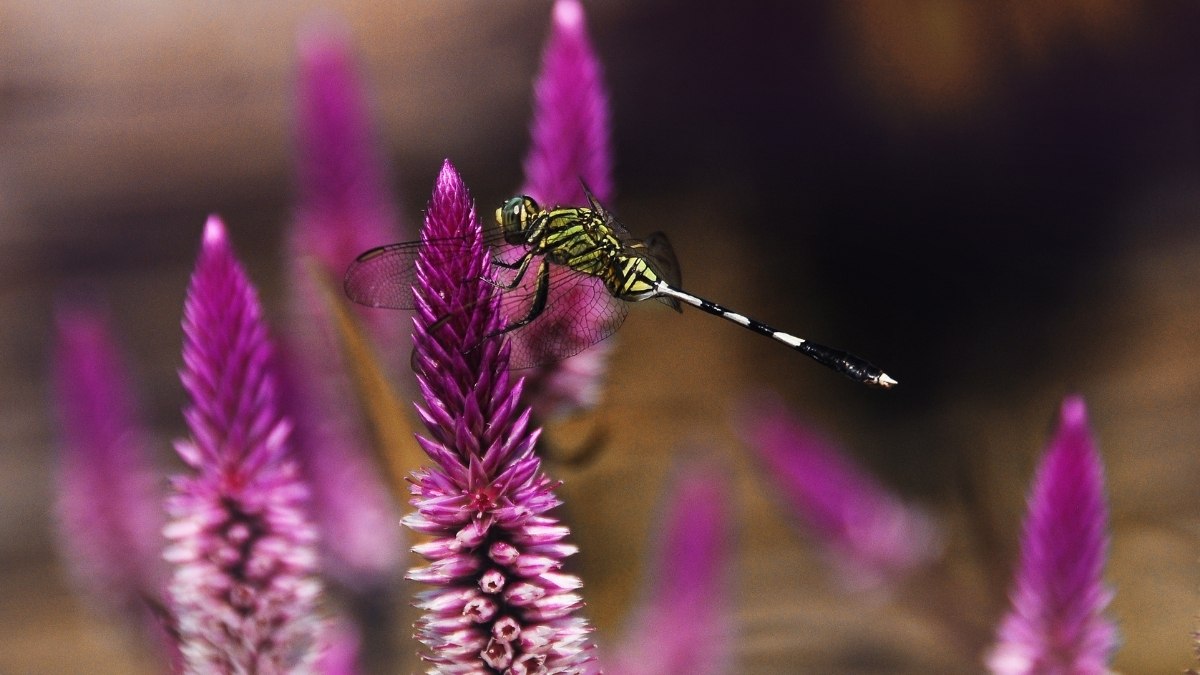Imagine a garden sanctuary where brilliant, iridescent wings flash through the air, silently eliminating your mosquito problem. You love spending time outdoors, but swarming mosquitoes, gnats, and the thought of resorting to chemical pesticides are currently ruining your outdoor enjoyment.
It doesn’t have to be this way. You’re about to discover the 11 essential plants that attract dragonflies—nature’s most efficient and beautiful form of natural mosquito control.
This definitive guide covers the specific aquatic plants for dragonflies and the sturdy upland species needed to create a thriving dragonfly garden habitat.
You will learn exactly how to provide the right conditions to attract dragonflies instantly, ensuring these majestic aerial predators make your yard their permanent hunting ground, giving you back your patio evenings.
1. Water Lily (Nymphaea)
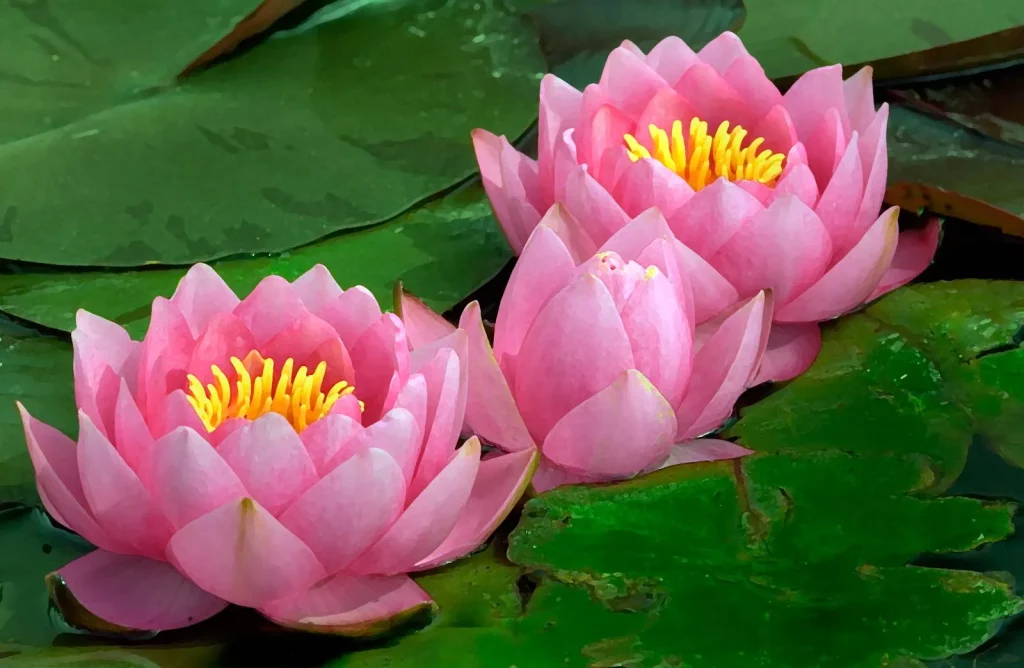
Water Lilies are a classic addition to any pond, and they serve a vital, multi-functional role for dragonflies. Their broad, floating pads offer stable, sun-soaked platforms where adults can rest, bask to regulate their body temperature, and even mate.
More importantly, the submerged parts of the leaves and stems offer camouflage and protection for young, developing nymphs as they hunt smaller aquatic insects.
The lily pads are also a favorite site for female dragonflies to lay their eggs, inserting them directly into the plant tissue for protection. This combination of shelter, sunbathing spot, and oviposition site makes the Water Lily one of the most effective plants that attract dragonflies to a pond setting.
Ensure you have ample surface coverage to control algae, but leave open water sections for flight.
Egg-Laying/Shelter: Water lilies provide the perfect place for dragonflies to lay eggs and shelter for the maturing nymphs.
Perching: Adults use the leaves as a perch during mating, provided they remain out of the water.
Tip: Plant in containers at 1.5–2 feet deep to manage growth.
2. Pickerelweed (Pontederia cordata)
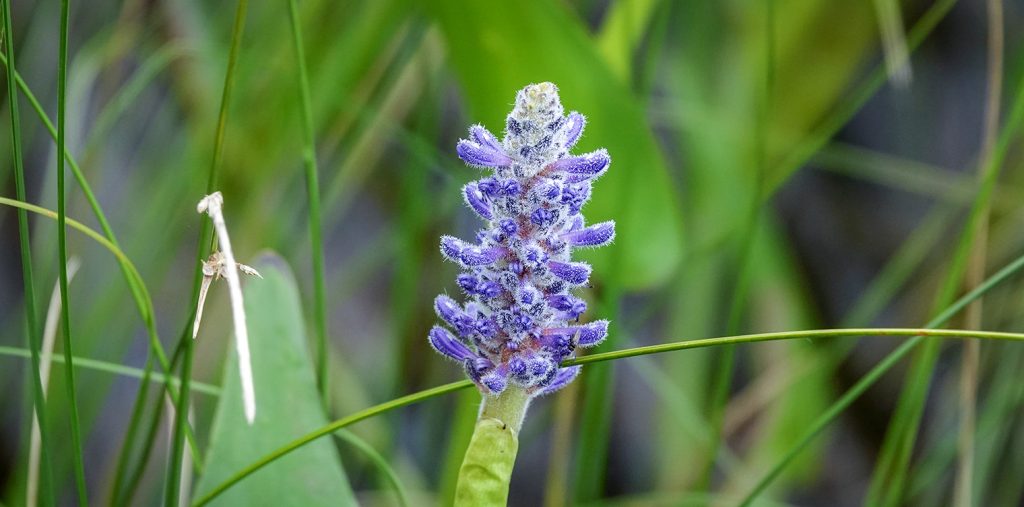
Pickerelweed is a graceful marginal plant, identifiable by its glossy green, heart-shaped leaves and showy spikes of blue or purple flowers. This emergent perennial is crucial because its sturdy, upright stalks provide a perfect ladder for dragonfly nymphs.
When it’s time for the nymph to undergo its final molt and emerge as an adult, it must crawl out of the water and anchor itself to a vertical stem in a dry area.
These tall, durable stems of Pickerelweed offer the necessary structure for the nymph to shed its exoskeleton (the exuviae) and unfurl its wings without falling back into the water. This plant, therefore, is an indispensable part of creating a complete dragonfly garden lifecycle habitat.
Emergence/Perch: Loved by dragonflies for its tall, dense foliage and glossy stalks that create perfect resting and emergence spots.
Appearance: Features beautiful purple/blue flowers.
Water Depth: Grows best in wetlands and shallow ponds or edges of water bodies.
3. Cattails (Typha latifolia)

Cattails, or Bulrushes, are instantly recognizable and offer towering, robust stems essential for late-stage nymph emergence and adult perching. While they can be aggressive spreaders, they are highly effective plants that attract dragonflies due to their structure.
The sheer height of the stalks allows dragonflies to perch high above the water, giving them a clear vantage point for hunting their prey, such as gnats and mosquitoes.
Furthermore, the dense root systems and tall, reedy foliage offer excellent cover and shelter for dragonflies during poor weather. Planting a non-aggressive dwarf variety or containing the roots is an effective strategy for using this plant to maximize the mosquito control benefits of your dragonfly garden.
Nymph Climbing: Dragonflies like to lay eggs in Cattails, and their young climb on the stems to rest.
Moisture Preference: Loves moist soil, swampy environments, and full sunlight.
Containment Tip: Use a container with no holes to manage their aggressive growth.
4. Wild Celery (Vallisneria americana)
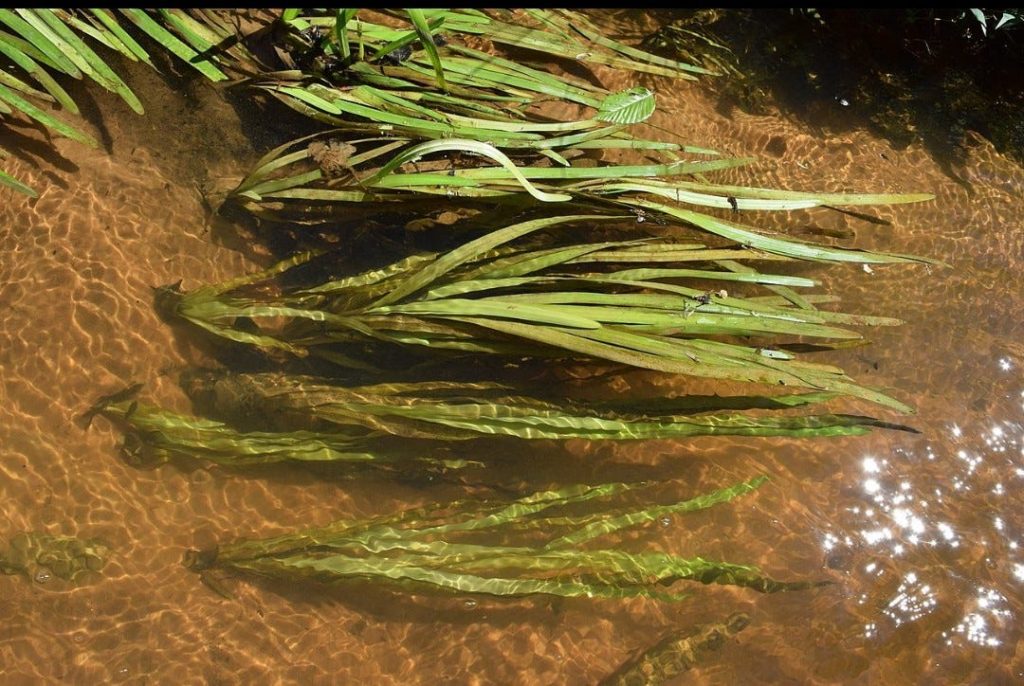
Wild Celery, also known as American Eelgrass, is an excellent example of a vital submerged aquatic plant, a category often overlooked by gardeners. It grows entirely underwater, anchored to the pond bed. Its long, ribbon-like leaves provide essential, hidden habitat for the dragonfly nymphs.
Nymphs are ambush predators, and the dense, grassy foliage of Wild Celery allows them to hide and hunt smaller aquatic invertebrates, including mosquito larvae.
Providing submerged vegetation is critical for the food web that sustains the nymphs, acting as a protected nursery deep within the pond environment. This ensures the future population of mosquito-eating adult dragonflies will thrive.
Nymph Habitat: Provides excellent aquatic habitat and surface for dragonflies to lay their eggs.
Type: A submerged plant that helps shelter young dragonflies and their prey.
Growth: A type of tape grass that provides an excellent aquatic habitat for dragonflies.
5. Joe-Pye Weed (Eutrochium purpureum)
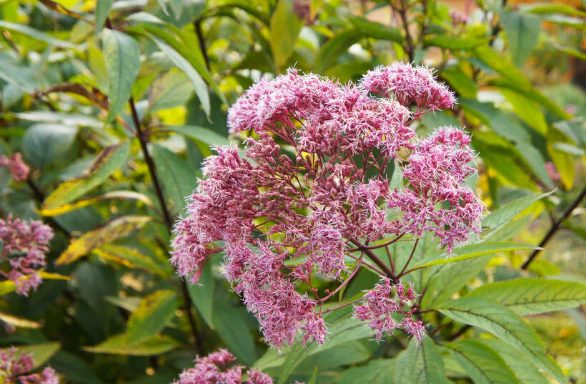
Joe-Pye Weed is a magnificent, towering perennial that can reach heights of up to 12 feet, making it an ideal aerial perch for dragonflies. Its late-summer clusters of pale pink-purple flowers are a magnet for various pollinators, which are a key food source for adult dragonflies.
The sheer height and rigidity of its stems allow dragonflies to bask in the sun and launch surprise attacks on passing prey.
Placing Joe-Pye Weed near your water feature creates a perfect ‘watchtower’ for these airborne hunters. The vanilla-like fragrance it releases is an added bonus for the gardener, while the plant’s robust structure is what truly helps to attract dragonflies instantly to your yard.
Perching: Tall, sturdy plant perfect for adding height and color, and provides ample perching for dragonflies.
Prey Attraction: Lures countless insects, providing a food source.
Height: Can reach up to 12 feet tall.
6. Swamp Milkweed (Asclepias incarnata)
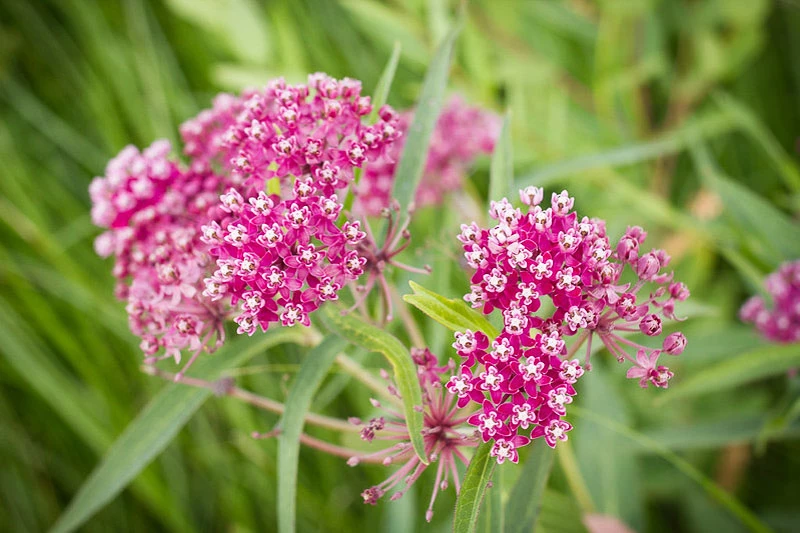
Swamp Milkweed is a gorgeous native perennial that thrives in the moist, boggy conditions often found around the edges of a dragonfly garden pond.
While famous as a host plant for Monarch butterflies, its role in attracting dragonflies is indirect but essential: it attracts a diversity of smaller insects that become a reliable food source for the aerial predators.
Its moist-loving nature makes it a perfect marginal plant, bridging the gap between the fully aquatic plants and the upland garden.
The pink and white flower clusters are attractive and sturdy enough to provide excellent sun-basking and hunting perches for dragonflies looking for a high-traffic area to hunt.
Habitat Bridge: Thrives in moist soil near water.
Prey Attraction: Draws in pollinators and other insects which dragonflies eat.
Growth: Grows well in moist, clay soil with full sun.
7. Black-Eyed Susan (Rudbeckia hirta)
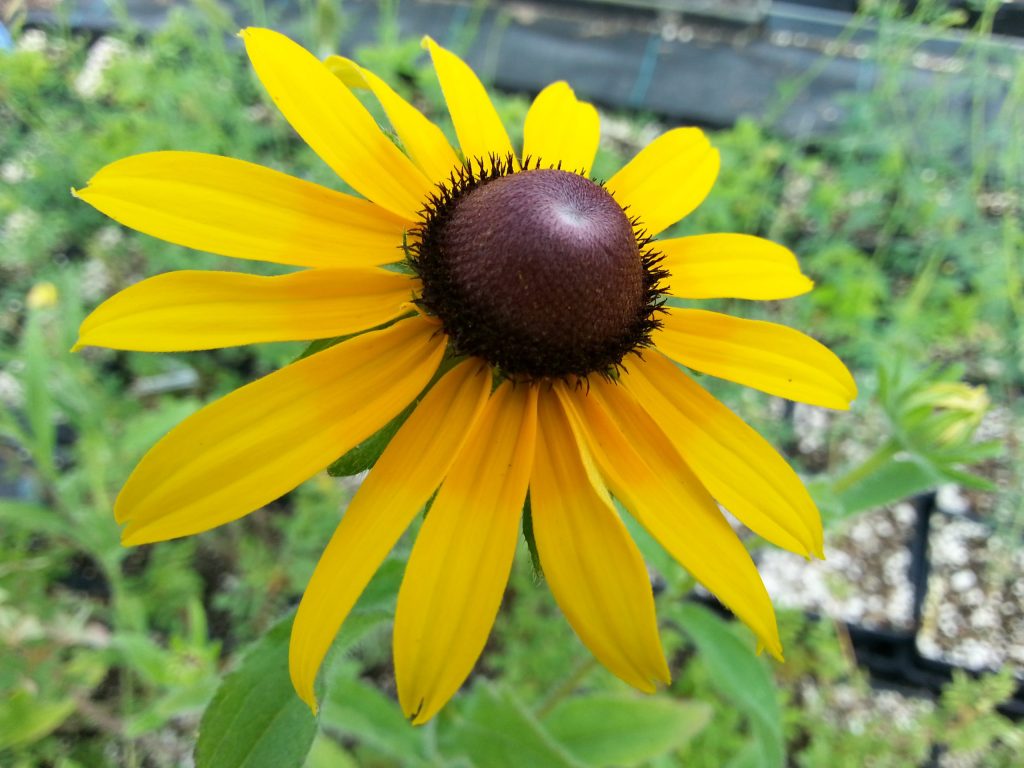
The vibrant yellow petals of the Black-Eyed Susan are a favorite of many pollinators, making them exceptional plants that attract dragonflies by proxy. Its sturdy, herbaceous stem provides a solid landing and perching spot, and the tall flower stalks offer a high-visibility hunting post.
Even in gardens without a pond, planting a dense cluster of Black-Eyed Susans can help attract dragonflies instantly by creating an irresistible insect feeding zone. As a low-maintenance, drought-tolerant plant once established, it’s a simple addition for any gardener focused on organic pest control.
Perching/Prey: Provides sturdy perching areas and attracts a myriad of insects.
Tolerance: Easy to care for, adapts to almost any soil type with full sunlight.
Pond Alternative: Can be planted near a pond in marsh conditions or in drier soil if no pond is available.
8. Purple Coneflower (Echinacea purpurea)
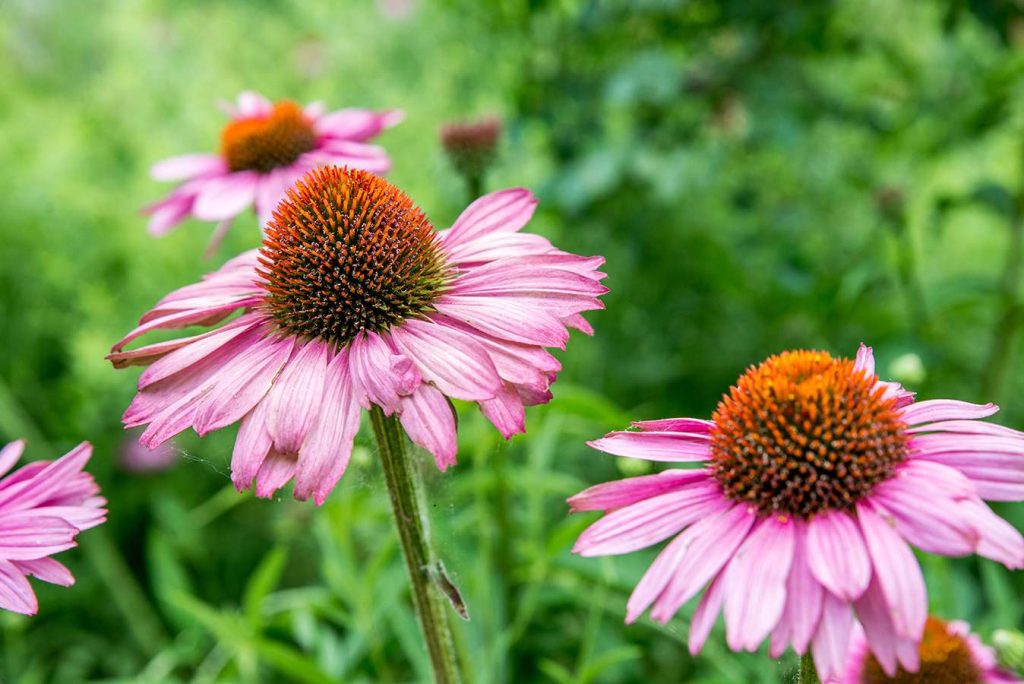
Purple Coneflower is a hardy, iconic wildflower whose striking pink or purple petals and spiky central cone provide a dual benefit: they attract numerous small insects and offer a rugged, stable perching site.
Dragonflies need to bask in the sun to warm their bodies for flight, and the wide, flat cone shape of the mature flower head is a perfect, heat-absorbing landing pad.
Including Coneflower in your plan adds to the biodiversity of the garden, which is key to sustaining a healthy population of prey insects for the dragonflies. This is an essential plant for creating a diverse, multi-functional habitat.
Perching: Provides sturdy perching areas and is loved by pollinators.
Prey Attraction: Attracts dragonflies indirectly by supporting diverse insect prey.
Maintenance: Hardy wildflower that requires little maintenance.
9. Yarrow (Achillea millefolium)

Yarrow is a low-maintenance, drought-tolerant perennial known for its huge clusters of flat-topped flowers.
These flower clusters act like landing strips for numerous small insects and parasitic wasps, which form the base of the dragonfly food chain. Its aromatic flowers come in many colors, adding variety to the landscape.
For the beginner gardener seeking to attract dragonflies instantly, Yarrow is a fantastic, resilient choice. Its robust stems create sturdy, low-level perching sites for dragonflies to rest and hunt from, especially in open, sunny spots.
Prey Attraction: Important source of nectar for pollinators, attracting the insects dragonflies eat.
Maintenance: Low-maintenance, easy-to-care-for plant.
Structure: Perennial wildflower characterized by huge clusters of petals.
10. Water Horsetail (Equisetum fluviatile)
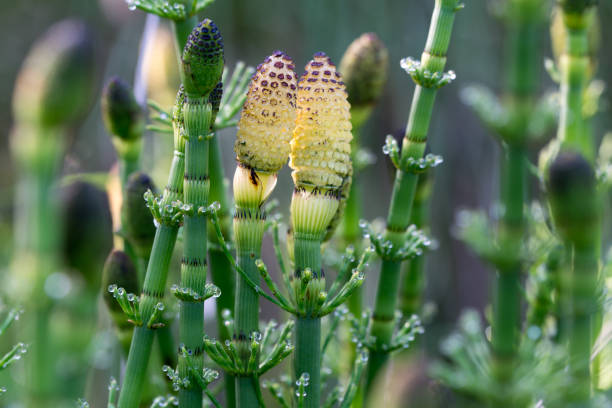
Water Horsetail is a prehistoric-looking emergent plant with distinctive, bamboo-like stems. This plant is invaluable because it mimics the structure of emergent reeds without the aggressive spreading of some other wetland plants. Its smooth, vertical stems are perfect for the emerging nymphs to climb.
As an emergent marginal plant, it is one of the very plants that attract dragonflies directly by supporting their metamorphosis. Adults also find the straight, hollow-looking stems to be ideal, high-visibility perching sites, creating a unique texture in the dragonfly garden.
Emergence/Perch: Provides excellent perching spots for adult dragonflies and encourages female dragonflies to lay.
Structure: Features bamboo-like stems.
Water Requirements: A water plant with both submerged and floating parts
11. Blue Flag Iris (Iris versicolor)

The Blue Flag Iris, or Northern Blue Flag, produces striking, vibrant purple-blue flowers on tall, rigid stems. Like Pickerelweed, the firm stems of the Iris are vital as emergent supports for nymphs leaving the water to transform into adults. The tall, sworde leaves are also favored resting spots for adult dragonflies.
This plant is an excellent choice for the shallow, marshy edges of a pond, as it thrives in wet conditions. Its beautiful flowers add an ornamental touch to the functional habitat, proving that a dragonfly garden can be both a beautiful and effective tool for natural mosquito control.
Emergence: Upright plants help larvae climb up and out of the water to emerge.
Appearance/Prey: Produces striking purple-blue flowers that attract dragonflies with their vibrant colors and nectar.
Use: Recommended for pond plant shelves.
Conclusion:
To recap, establishing a sustainable, thriving dragonfly garden is achieved through a two-part strategy: providing the necessary aquatic nursery for the young and offering high-visibility perches for the hunting adults.
From the crucial aquatic plants for dragonflies like the Water Lily and Pickerelweed that serve as underwater shelter and emergence stems, to the towering perches of Joe-Pye Weed and Black-Eyed Susans, you now have the complete blueprint for attracting nature’s best pest control.
By strategically combining these plants that attract dragonflies, your yard transforms into a self-sustaining ecosystem.
Start small—even a barrel pond with just a few emergent and floating plants can quickly begin to attract dragonflies instantly. Embrace this chemical-free, beautiful solution this season and establish a sustainable, vibrant habitat for natural mosquito control.

